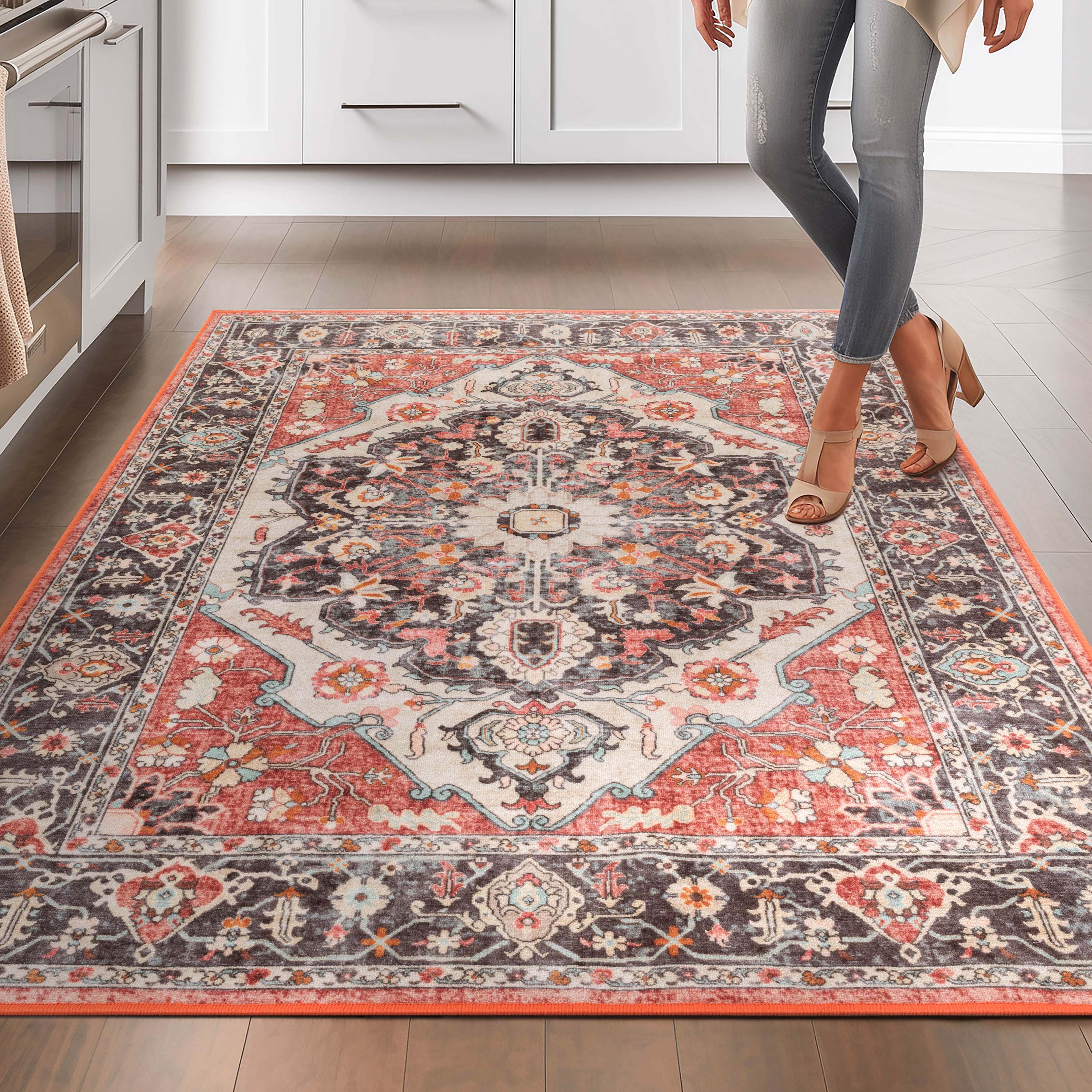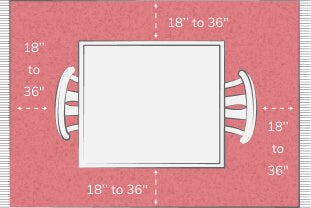Rug Size and Placement Guide
Just as a rug's pattern and color can make all the difference in a space, the size and placement of that rug makes a huge difference in the look and feel of a room; it can be the difference between open and inviting or tight and cramped. Choosing the right size rug is very personal to a given space, but we've put together this simple guide to start you in the right direction.

Measuring Helps
Measure and, if possible, tape it out. Determining the size of your space is the best way to ensure you purchase the right sized rug. Measure the area where you plan to use the rug and tape out a placement with painter's tape to get an idea of how it will look in the space. This makes it easy to try different sizes and placements without even having a rug on hand.
Tip: Leave 18-24” of exposed floor around the perimeter of your rug.

Living Room
The focal point of any living room is the seating area, and its dimensions and layout will be the most important factor when choosing a rug size. A too-small rug can make a sweeping space feel cramped while a larger rug will give even tiny rooms a spacious, coordinated look. No matter the size, you’ll want to leave 18 to 24 inches of exposed floor around the perimeter. If you like to keep your furniture legs off the rug a 5x7 size is recommended. An 8x10 rug will fill the visual space of the seating area and should have the front legs of your furniture placed around the edges. A 9x13 rug will fill most rooms and all furniture should be placed directly on top to keep the space intimate.

Bedroom
For a bedroom rug, the size of your bed will determine the size of the rug. Placement is traditionally perpendicular to the bed with the front legs on top and plenty of rug visible on all sides. The foot of the bed will reach about halfway across the rug. For a twin or full-sized bed, a 5x7 rug fits nicely while an 8x10 or 9x13 is best for a queen-sized bed. A king-sized bed needs a king-sized rug so get the largest one you can to keep the room looking magnificently spacious. All placements should leave 18 to 24 inches of floor space around the rug.
This traditional look is one way of doing things, but there are lots of ways to use a rug in a bedroom so try the one that works best for your space!

Dining Room
When shopping for a new dining room rug, consider the table, how big it is, and how many people it sits.
Chair legs should remain fully on the rug whether tucked in or pulled out, with 18 to 36 inches of rug extending from each edge of the table. Remember to account for any extendable leaves and keep 18 inches of floor space between the rug and wall. For oval and rectangular tables a 5x7 rug is best for seating 2-4 people. To seat 6-8, an 8x10 or 9x13 rug is recommended. Square and round tables seating 4-6 pair perfectly with a 7 or 9-foot round rug.

Entryway & Hall
Your hallway rug should extend down at least 75% of the length of the hallway. You should also be able to see your flooring on either side of the rug.

Kitchen
Rugs in front of the sink or stove help ease pain in the feet, legs and lower back. Whether you choose a mid-size 3x5 rug to anchor your eating area or a long runner for in front of the sink, keep the rug's edge at least six inches away from the walls and cabinets. If your rug doesn't have a slip-resistant backing, a rug pad can help prevent sliding and falls.

Kids' Room
For kids' rooms, the same rug sizing rules used for adult bedrooms apply. Choose a smaller rug that will extend beyond either side of your child's bed. Or a large one that will cover the majority of the floor space to provide a soft surface for the little ones to walk on.
For nurseries, select a small rug (4x6, 5x7) that will will cover the majority of the floor space in front of the crib, providing a soft surface for the little ones to play. Alternatively, choose a large rug (6x9, 8x10) to cover most of the room so it can grow with your child as they age.

Porch & Patio
Porches and patios may be outdoor spaces, but the right rug and furniture can make them as inviting as your living room. For a cozy, living-room-style setup, follow similar guidelines: leave 18-24" between the rug's edge and the patio or deck to create a spacious feel. A 5x7 area rug works well for keeping furniture legs just off the rug, while 8x10 or 9x13 area rug sizes are ideal for partially or fully covering furniture legs.
For dining areas, ensure chair legs stay on the rug, whether pulled out or tucked in, with 18-36" of rug extending beyond the table. Use a 5x7 rug for seating 2-4 people, 8x10 or 9x13 for 6-8, and a 7' or 9' round rug for round or square tables seating 4-6.
Smaller rugs like 2x3 mats or 2x7 runners are perfect for entryways, walkways, or filling odd spaces.























